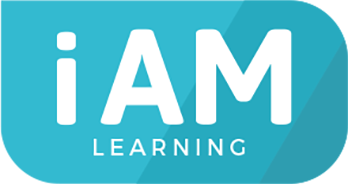
In L&D, we love whipping out the Ebbinghaus Forgetting Curve (EFC). We’re all guilty of it. No doubt you’ve also nodded along when it’s mentioned in webinars, referenced it in that valuable content you’ve written, or cited it when presenting a new learning strategy you’ve designed.
Heck, we’ve even done it. In the first draft of our ROI blog it was confidently used to demonstrate how quickly new information drops out of our heads. Thankfully there’s enough experts in our multi-disciplined L&D team to set us out on a debunking path.
Given its regular and joyous dusting off, you may assume that the EFC is scientifically robust and learning centric. It’s especially popular at present as it’s often twinned with buzzy Just in Time (JIT) learning. The conversation tends to be some variation of, ‘The Ebbinghaus Forgetting Curve proves just how quickly we forget when we learn, which is why it’s so important that we learn at the time of need, when it’s relevant.’
The concept itself seems pretty logical, however, solely using Ebbinghaus’ work is not the way to back it up.
After information is memorised - or in his wonderful words, “become possessions of the soul” - his findings suggest that:
- After one hour, half is retained
- After eight hours, a third is retained
- After six days, a fourth is retained
- After a month, a fifth is retained
While that sounds feasible, is it really true? And more importantly does that apply to everyone at all stages of learning and life?
To help you take a more critical lens to the forgetting curve, we’ve posed 5 key questions you should consider before you apply it generally to learning.
1. Is the Ebbinghaus forgetting curve still relevant?
The research paper, ‘Memory: A contribution to experimental psychology’, was published by Herman Ebbinghaus in 1885. That’s 136 years ago. Whilst we’re not suggesting that our ability to reliably store information has dramatically shifted over the past century, it is surprising that we’re still awarding it so much validity. Particularly above the more current and relevant studies into how our memory works (don’t worry, we’ll touch on this later).
There have been several attempts to repeat Ebbinghaus’s work over the years, but (thanks to the inconsistent methodology of his work), it doesn’t look like it can be accurately done.
One such effort, (Dros, Murre, 2015), discusses a series of unexplained changes during Ebbinghaus’ research. For instance: he relied more on intuitive corrections for the learning variable times, and even changed his mind between 1880 – 1885 about the best method to approach this.
It’s worth noting that Dros and Murre’s findings are largely aligned, and despite the stated limitations, they do applaud the original work. Though their praise is predominantly for the evidence of the existence of implicit memory - that we relearn quicker than we learn, even when we can’t consciously remember anything.
Ebbinghaus himself does touch upon some of the inconsistencies of his research (in the significant paragraphs concerning limitations). His seven months of testing was actually split across two periods between 1879 and 1884. The first period included longer episodes of memorising at different times of day to the second.
He states, ‘Frankly, the tests of the two periods are not strictly comparable’.
2. Can it really be applied to everyone?
Ebbinghaus’s experiment was performed on one person...himself. That’s right. It only represents the results of one man, who was also in charge of the show. Talk about a small sample size!
To quote him directly, ‘The tests were all made upon myself and have primarily only individual significance.’
Let’s be honest, it’s unlikely he envisioned we would lavishly apply his findings to all learners 100 years later.
3. Was the content relevant to real life learning?
Unless your learning objective is that a twenty-nine-year-old man retains gibberish, you might want to steer clear of comparisons. The content used in this study was a list of nonsense syllables.
This choice is not without merit though. He needed to choose combinations of letters that he had no cognitive connection to, to rule out making memory associations (which he acknowledged was ‘still far from ideal’.)
This means you can’t assume that Barry from IT will forget his GDPR training in exactly the same way as Ebbinghaus forgets his syllables. Unless you deliver his course in anagrams perhaps?
4. Is there a difference between memorising and learning?
Your teenage years likely featured a lot of late-night cramming sessions ahead of exams. The objective was clear back then: drill in as much as possible in order to pass the exam. Who cares if you remembered those dates or case studies you so meticulously memorised later in life?
While you may have passed your exam well enough, the question remains - were you actually learning?
True understanding of a concept is pretty difficult if you use this method. Learning needs to be done over time, hold some element of meaning or interest for you, or be learned through experience.
Ebbinghaus focused on memory alone, or more generously, learning with no discernible meaning.
Using the forgetting curve (especially in the over-simplified way it’s so often now used) as a shining example of what happens when we fail to engage modern learners in the workplace seems...clumsy.
5. Are you focusing on the right findings of the forgetting curve?
The issue with Ebbinghaus’ research is that we’re taking it too literally and applying it too liberally. And when you move beyond the forgetting curve, the yawning difference between intention and aptness, you discover the early shoots of a lot of ideas on learning that we can really get behind today.
He recognises the individualistic associations we have with words and how our ability to attribute personal meaning could make those words easier to recall (hence selecting gibberish to try and rule this out).
Today, we champion contextualised learning - that is, housing the learning within something already familiar, using recognisable breadcrumbs to create an accessible gateway. It’s comforting, familiar, and you can connect early on to accelerate your understanding.
Ebbinghaus also lightly discusses the impact of what we now think of as the ‘bizarreness effect’ - using something surprising and unexpected to grab attention and stimulate curiosity. As he explained: ‘We form certain conceptions during striking experiences…there are probably many conceptions which we have not as yet formed which would be serviceable and indispensable for a clear understanding of the facts.’
He also names the innumerable factors at play when it comes to how quickly and deeply we learn (even if he wasn’t able to interrogate them): certainty, interest, degrees of forgetfulness, sleep, stress, mental vigour, concentration of attention.
We now understand much more about the significance of these elements, and many inform modern approaches. For example: bite sized content to avoid cognitive overload, or connecting learners with the personal value and relevance, to name but a few.
He notes the link between length of study time and length of retention (even when we make mistakes), suggesting that repetition creates ‘deeply cut pictures...fading after ever longer intervals’ and suggests that ‘with any considerable number of repetitions a suitable distribution of them over a space of time is decidedly more advantageous than the massing of them at a single time.’
Today, we thoroughly support the benefit of spaced learning and the importance of reinforcement and refreshment.
Applying a critical lens to the forgetting curve
Maybe forgetting about the forgetting curve is too harsh a recommendation. But then, ‘take it with a healthy pinch of salt and also think about some of the other interesting aspects of the research’, doesn’t quite have the same ring to it.
The work was arguably advanced back in the day and instrumental in inspiring more rigorous studies. The key takeaway here is, if you’re going to cite the EFC in L&D, you really need to reference and apply it more conscientiously - which includes acknowledgment of its limitations.
Whilst this blog falls far short of a critical analysis on Ebbinghaus’s extensive paper (which you can read here), hopefully it serves as food for thought. It’s also a reminder to dig a little deeper and push beyond passive regurgitation.
It’s a good job we’re in the learning business.
‘If the two foregoing points of view are taken together -- differences in individuals and differences in content -- an endless number of differences come to light.’ - Ebbinghaus
If you’re in the process of developing a new learning strategy and would like a chat about what would work best in your organisation, reach out to Gemma who will be happy to help you consider your options.
Further Reading
The Affective Context Model - Nick Shakleton-Jones: The importance of our emotional reactions and connections in learning.
Cognitive Load Theory - John Sweller: The impact of incoming information on our working memory and ability to learn.
Interference - Leo Postman: How previous learning affects our ability to learn

